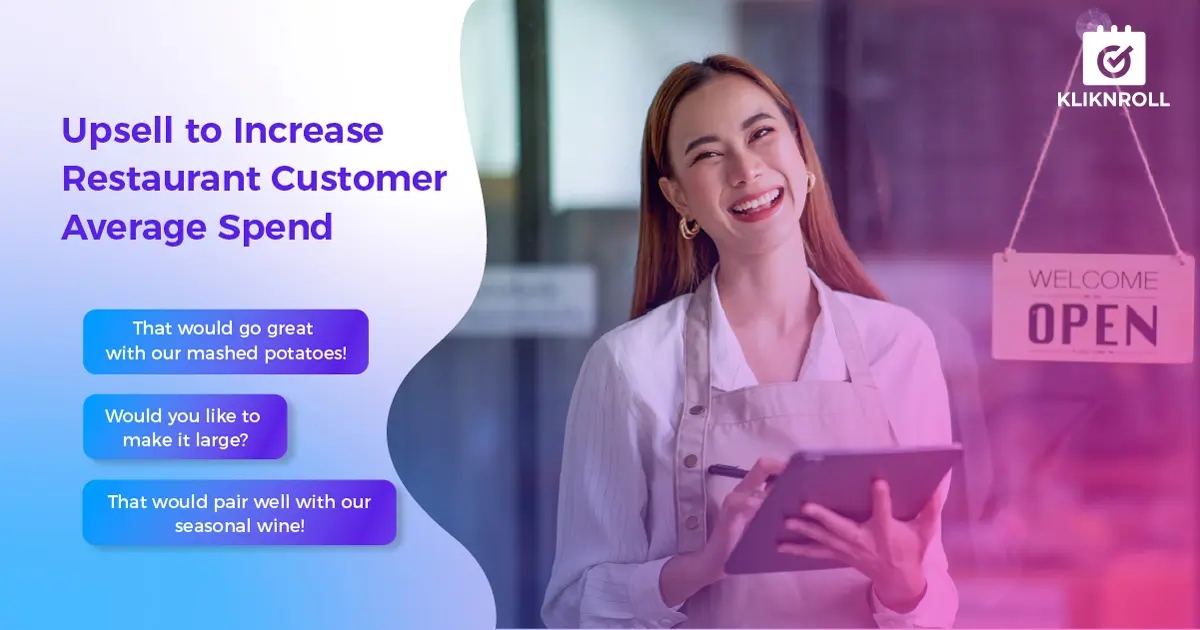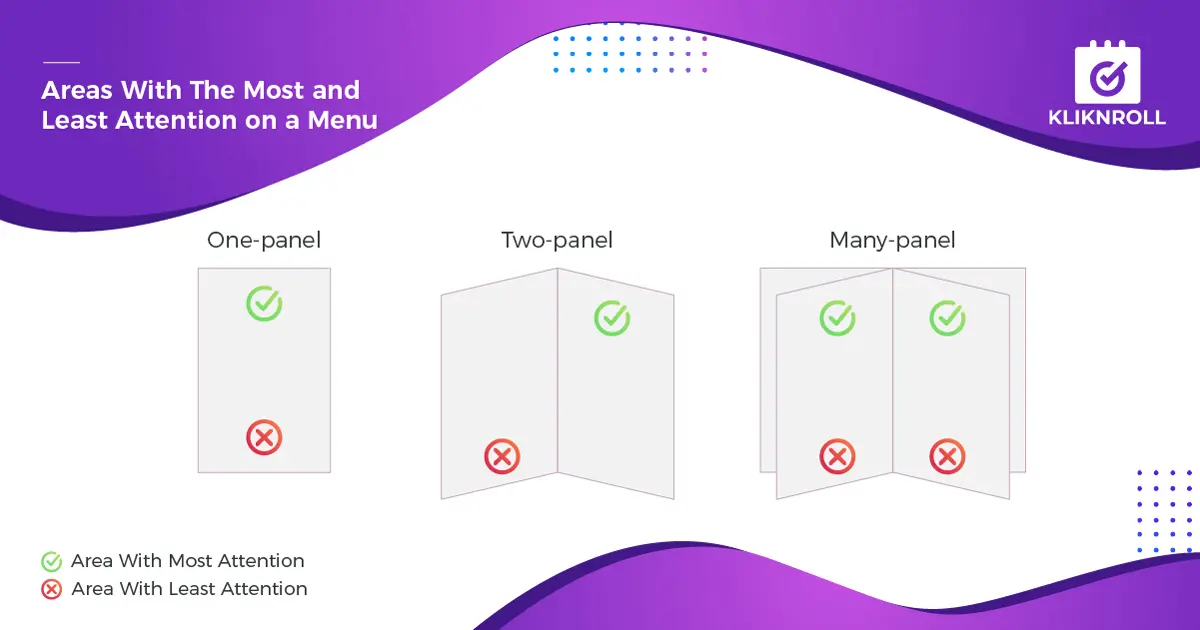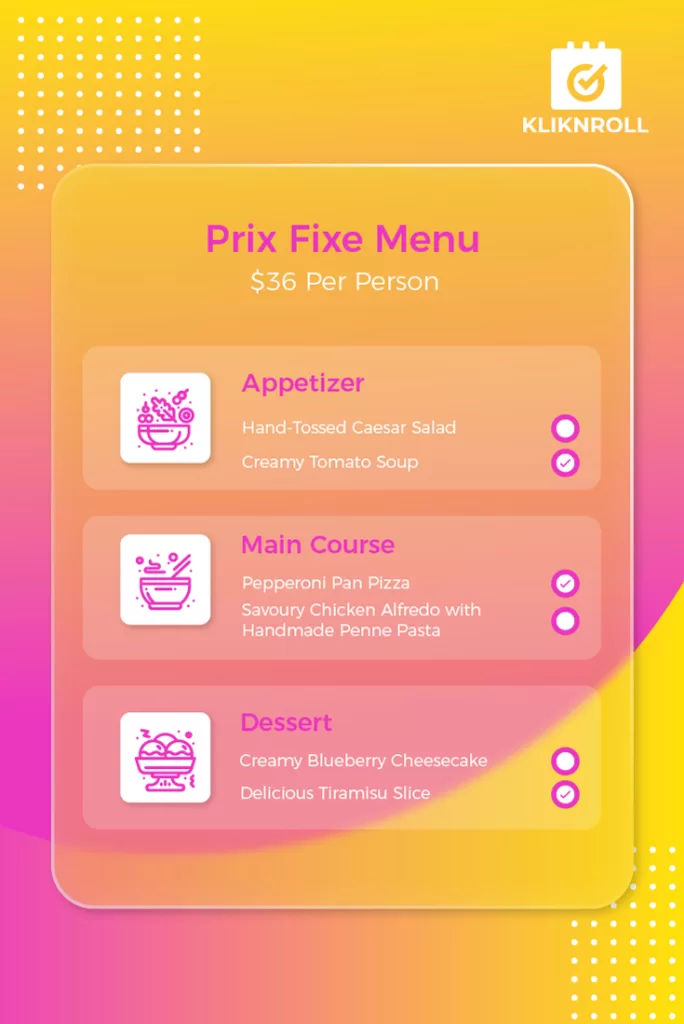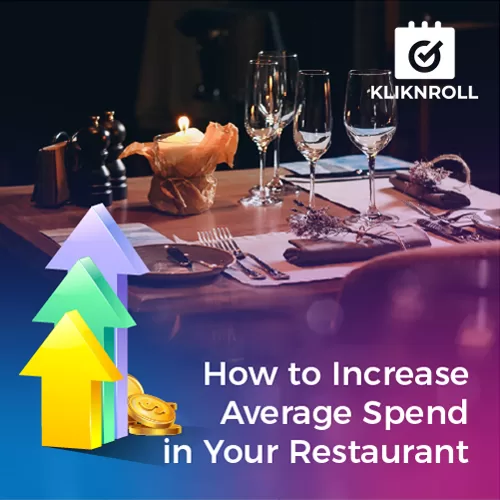Table of Contents
What is Average Spend Per Customer & How to Calculate It (Formula)

Average spending per customer, often referred to as the average check or average transaction value, is a key performance metric for any restaurant.
It represents the average amount of money a single customer spends during their visit to your establishment.
Understanding and effectively calculating this metric is crucial for restaurant owners because it directly impacts revenue, profitability, and the overall financial health of the business.
To calculate the average spend per customer, you simply divide the total revenue generated during a specific period (e.g., a day, week, or month) by the total number of customers served during that same period. The formula is:
Average Spend per Customer = Total Revenue / Total Number of Customers
For example, if your restaurant generated $5,000 in revenue over the course of a week and served 500 customers during that time, the average spend per customer would be $10. This means that, on average, each customer spent $10 during their visit to your restaurant.
Increasing that $10 to $15 will net $7,500 (or a 30% increase in sales, while serving the same amount of customers).
Why Average Spend Per Customer is an Important Metric
Increasing your average spend per customer is not just a means to boost revenue; it’s also important as a highly cost-effective strategy.
Acquiring new customers can be more expensive and time-consuming, from advertising efforts to additional staff and space requirements.
So, increasing the spending of existing customers is a more efficient way to drive revenue as well as profit!
Every restaurant has a finite number of tables and seats. There’s a limit to how many customers you can serve within your restaurant’s capacity.
By focusing on increasing the average spend per customer, you maximize your restaurant’s revenue potential without having to bring in extra tables or compromise on the quality of food and service.
While encouraging higher spending per customer is important, it’s equally important to consider your margins and gross profit.
After all, having a high spend per customer means little if your profit margins are eaten due to expensive ingredients, labor-intensive dishes, or excessive preparation time. So, try to concentrate on promoting higher-margin items on your menu.
Achieving a balance between increasing spend per customer and maintaining customer satisfaction is the key to long-term success.
Overpricing items can discourage repeat visits and can result in customer loss.
To prevent this, strategically position high-margin items in your menu and create a balanced offering that caters to various customer preferences and budgets!
Actionable Ways to Increase Average Spend Per Customer in a Restaurant
1. Restaurant Upselling and Cross-Selling

One of the ways that you can increase check value or average spend in your restaurant can be achieved through effective restaurant upselling strategies, with your wait staff playing a pivotal role in it.
Properly trained wait staff are the key to successful upselling, and it’s not about pushing the most expensive dishes every time but rather making well-considered suggestions to customers.
This could involve stuff like recommending upsized portions or suggesting complementary items like wine pairings for entrees or high-margin menu items when customers seek recommendations.
Building rapport with customers through friendly small talk is great, and it significantly increases the chances of successful upselling, especially with regulars.
Try offering a small bonus or incentive for successful upsells, which can serve as a powerful motivator for your wait staff to actively engage in upselling without coming across as pushy.
Incorporating upselling into your restaurant’s culture and providing the right employee training can lead to a substantial increase in the average spend per customer, making it great for both the staff and your restaurant’s bottom line while providing a positive dining experience.
2. Provide Better Value & Increase Prices
One straightforward strategy to increase spend per customer is raising your prices. It’s a simple equation: more earnings with the same costs.
However, the key to making this tactic successful is to ensure that you’re also providing better value to your customers.
Without added value, you risk eroding trust and potentially losing loyal customers.
Value can take various forms, like offering larger portions, improving the overall customer experience, creating a more comfortable dining environment, or even surprising your customers with small perks like a complimentary dessert or a drink.
These seemingly small gestures can leave a lasting impression, making customers feel that the premium price is entirely justified and, in fact, a worthwhile splurge!
Balancing price increases with enhanced value is the recipe for a win-win situation, resulting in increased revenue and satisfied, loyal customers.
3. Implement a Restaurant Loyalty Program
Introducing a restaurant loyalty program is a fantastic strategy, not only for increasing the average spend per customer but also for nurturing customer retention.
Whether you opt for a point-based system or another format, a loyalty program provides customers with an incentive to spend more, as they can enjoy rewards and benefits.
Remember the whole high-margin point we’ve mentioned earlier? Offering rewards that don’t heavily impact your costs can effectively boost the average spend while simultaneously increasing your overall gross profit – a win-win!
Here’s a pro tip: Leverage the data collected from your loyalty program to streamline your restaurant’s operations and try out targeted email marketing campaigns to further enhance customer spending.
Customers who have enrolled in your loyalty program are ‘warm leads,’ making them more likely to take advantage of gift cards, participate in ongoing promotions, and ultimately increase their average spending and your gross profit.
If you haven’t got a loyalty program yet, or maybe the one that you have isn’t doing it for you, feel free to contact us and let us handle everything for you!
We have more than 10 years of experience in this business and service some of the biggest brands like the world like Häagen-Dazs and McDonald’s (HK)!
Click the button below to contact us and we’ll take care of the rest!
4. Push and Optimize High-Margin Items
Now that we’ve been discussing high-margin items, let’s see how you can actively promote them to enhance your average spend.
Upselling is one way, but you can also use high-margin items as a lead magnet, creating another win-win scenario that attracts both new and existing customers and leaves them feeling like they’re getting an amazing deal.
A lead magnet, in this context, is a complimentary item that entices people to visit and spend at your restaurant – think a free drink that lures in diners.
This strategy not only increases your customer base but can also boost the average spend, all without breaking the bank.
Furthermore, optimizing high-margin items can be in the form of strategically placing them at the top of every menu page where they’ll receive the most visibility.
Here’s a handy chart that we made to give you a better idea on where you can put high-margin items:

This naturally guides customers towards these items, increasing their chances of purchasing organically.
Additionally, if possible, including high-quality photos of these items can further enhance the conversion rate – a topic we’ll look into later in this article.
5. Remove the Currency on the Restaurant Menu!
In a crafty move that many in the restaurant or hospitality industry might not be aware of, try removing the currency symbols (e.g., $, €, £) from your menu!
Surprisingly, research has shown that this simple adjustment can naturally encourage customers to spend more on average.
The psychology behind this is interesting: when currency symbols are absent, customers are less likely to immediately associate prices with real-life money.
This subtle change can create the illusion that prices are more affordable than they are, organically motivating customers to make choices that boost the average spend.
This technique is similar to the practices in places like Las Vegas casinos, where they use chips instead of actual currency, creating a disconnect between the chips and real money.
Some gaming companies do something similar that requires players to purchase “points” to buy items in virtual stores, detaching the in-game purchases from the tangible cost.
Removing currency symbols from your menu can subtly nudge customers to explore and spend more, contributing to an overall increase in your restaurant’s average spending – without doing too much.
However, there are some caveats. Places like Switzerland have their own currency, the Swiss Franc, but many major stores also accept the Euro.
So to avoid confusion, we’d suggest leaving the currency on in situations like this. After all, the customer experience is the most important factor!
6. Optimize and Make Most of Restaurant Menu Design
Menu design is a nuanced and important aspect of the dining experience that can significantly impact your restaurant’s average spend.
While it’s a broad topic and deserves an article on its own, let’s explore some of the most accessible ways to enhance menu design that can lead to increased sales:
i) Price Anchoring:
Price anchoring is a psychological technique used to influence customer choices. It involves strategically placing high-priced items on the menu to make other items seem a lot more affordable.
For instance, high-priced grilled lobster tails might be at the top, which can make other, slightly lower-priced items appear as better value. Customers tend to choose options that they perceive as offering the best value!
ii) Provide Clear Pictures:
Research has demonstrated that incorporating high-quality photos alongside menu items can boost the average spend by up to 6.5%.
To maximize the effectiveness of these images, try pairing them with high-margin items or with price-anchored options. Visual representation allows customers to better connect with the items and can tempt them to opt for more expensive choices.
iii) Having Clear Item Descriptions:
Cornell University researchers have discovered that clear and descriptive item descriptions can significantly enhance sales, sometimes by as much as 27% on average!
Effective copywriting is a valuable skill to develop, and it can make a significant difference in customers’ ordering choices.
Here’s an example:
Bland Description: “Penne Pasta with Bolognese Sauce“
Descriptive Description: “Hand-Made Penne-Style Pasta with a Rich San Marzano Bolognese Sauce“
The descriptive description doesn’t only convey the dish’s ingredients but also paints a vivid picture of a delicious meal, drawing customers to choose the more detailed option.
By incorporating these elements into your menu design, you can encourage customers to explore a wider range of menu items and, in turn, increase the average spend.
7. Prix Fixe (Price Fixed) and Seasonal Combo Menus

Prix fixe and combo menus offer an excellent opportunity to boost the average spend per customer through strategic pricing and the careful selection of high-margin items. Try out these tips to make the most of these menus:
Smart Menu Composition: Craft your prix fixe or combo menu with an array of items that not only appeal to customers but also bring in profits. For instance, you can feature items like a “Creamy Tomato Soup” and a classic “Caesar Salad” as appetizers, both of which are relatively low-cost.
High-Margin Main Courses: The heart of your prix fixe menu should include more high-margin items that delight customers. Think of a “Pepperoni Pan Pizza” with a crispy crust, a creamy “Chicken Alfredo,” or a rich “Beef Lasagna.” These choices are staples and have very good margins.
Delightful Desserts: End the meal on a sweet note with dessert selections that not only satisfy cravings but also contribute to your profits. Examples include a “Blueberry Cheesecake” or a delightful “Tiramisu Slice” to round off the meal.
Themed Delights: You can also spice up your prix fixe and combo menus with various themes that entice customers. For instance, “Taco Tuesday” could feature tacos (which also have good margins), and “Casual Friday” might offer comforting soul food – you get the idea. Don’t forget seasonal themes, like “Halloween Frights” or “Christmas Cheer,” which can create buzz and attract more adventurous diners.
Conclusion
As we’ve talked about earlier increasing customer spend is a lot easier and profitable as opposed to trying to get new people through your restaurant doors.
By using strategies like menu optimization, having price fixed menus, price anchoring, or even something as unorthodox like removing currency from your menu can naturally help increase average spend!
These strategies also work for other industries like spas and salons as well! Though the details are different but the concept is similar.
If you’ve enjoyed this article or felt like you’ve learned something from it, or maybe you’d like to have your very own loyalty program, click the button below to contact us and we’ll see what we can do!

Hey there! I’m Jeffrey Hau, and my journey in the digital world started after I wrapped up my psychology degree at UCLA. Imagine coming back to the bustling streets of Hong Kong from the tech haven of Silicon Valley – it was a whirlwind of inspiration! Seeing how social media platforms were evolving at breakneck speed and realizing the limitations of traditional advertising in this digital age, I decided to dive in.
In 2012, I laid the foundation of Prizm Group. From our humble beginnings, we’ve now blossomed into a global powerhouse with a team of over 200 passionate professionals. Our HQ is right here in Hong Kong, and we’ve spread our wings to SG, AU, NZ, JP, and China.
As a digital problem solver, our team found that several industries are in need of reservation systems, especially for F&B, Hotels, Beauty, and Medical sectors. Our digital magicians started crafting reservation systems tailored to cater to these specific needs. We extended our expertise to e-commerce, voucher management systems, and campaign management systems, combining them into KlikNRoll – an all-in-one solution. We deep dive into various industries, understanding their unique challenges and developing innovative solutions.
We’re not just a company; we’re your dedicated partners in transforming how you navigate the digital landscape. Our passion lies in providing businesses with intuitive and tailored solutions using KlikNRoll’s powerful capabilities.
Ready to embark on this exciting digital adventure with us? Let’s make your brand stand out in the digital jungle!






